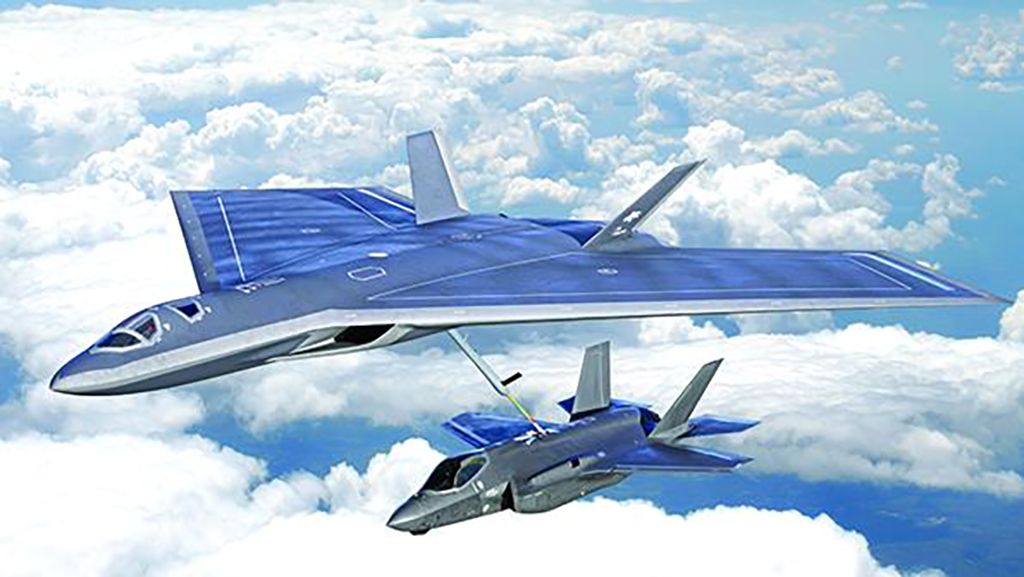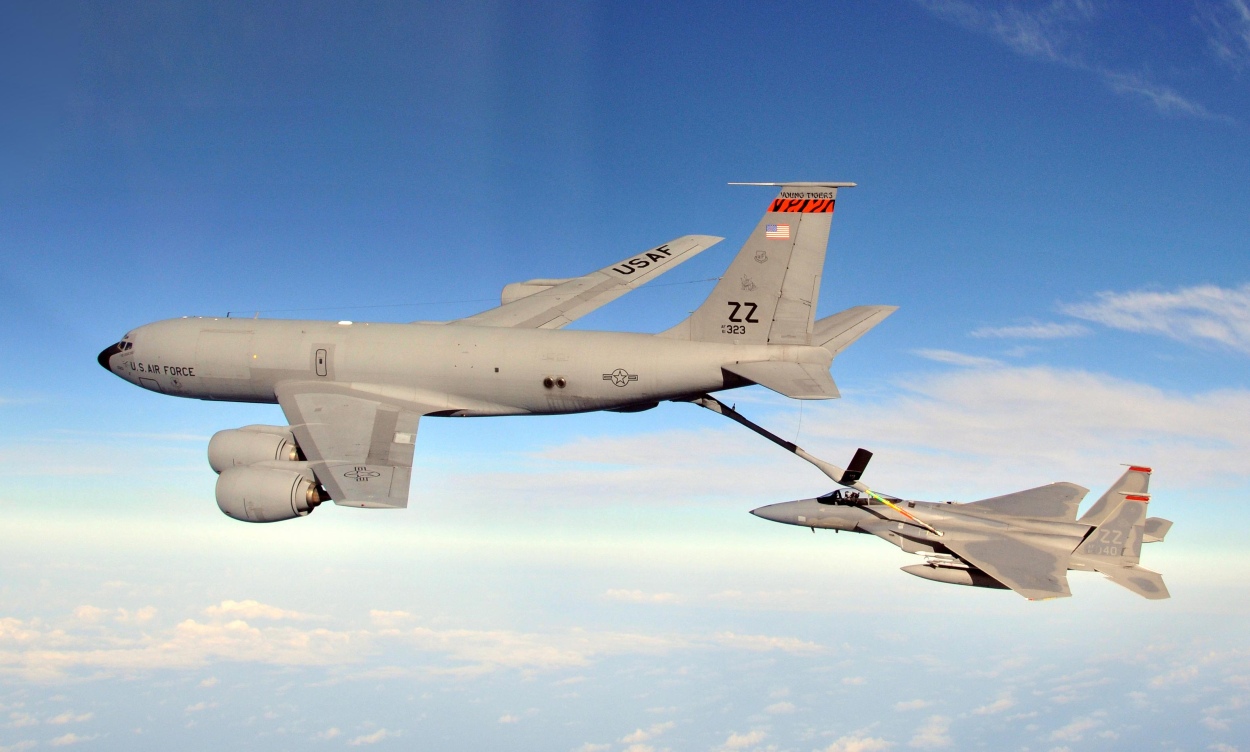With the U.S. Air Force looking for a more capable refueling tanker for future combat, the Lockheed Martin Skunk Works has released a rendering of a classified stealthy aerial refueling tanker, which, if accepted, would be indispensable in a conflict with China.
A rendering of a notional stealth tanker for the Next-Generation Air Refueling System or the KC-Z program was first published by Aviation Week. The program intends to replace the KC-46 and KC-135 tankers of the USAF in the 2030s.
The notional tanker is seen refueling a F-35A using the flying boom system in the renderings. It looks smaller than the tankers that it is being designed to replace.
Currently, Skunk Works (an official pseudonym for Lockheed Martin’s Advanced Development Programs, formerly called Lockheed Advanced Development Projects) has not published an official statement specifying whether this was an official design proposed for the USAF’s Next Generation Air-Refueling System (NGAS) program.
The rendering features a broad platform with huge clipped wings resembling lambda wings. Two relatively tiny vertical tails are outwardly canted and there is a narrow forward fuselage segment that protrudes at the front. A substantial amount of fuel would likely be stored in the big, broad wings to facilitate the aerial refueling operation.
The aircraft’s engine can be seen beneath the left wing, which is connected to the center fuselage of the aircraft. It is typical for stealth aircraft to have their engines deep inside the main fuselage. That helps reduce the radar signature. The two air intakes are rounded and recessed.
Further, the whole arrangement suggests that the boom that projects from the NGAS’s belly during refueling might operate entirely on its own without the assistance of a boom operator. The tanker seems to have been designed for extremely long-range missions, as seen by the refueling port located on top of the tanker, which suggests that the tanker may be able to take fuel from another tanker while in flight.
The clear cockpit view hints that the aircraft would have a crew of two. Compared to previous tankers – they have all been with two pilots, an additional boom operator, and occasionally other individuals — a two-person crew would represent a significant change.

The U.S. Air Force had sent out a request for information (RFI) last year regarding a new tanker that could survive in contested airspace. The RFI mentioned that the service was open to creative concepts in all sizes and performance classes that might potentially meet the demanding mission criteria.
NGAS is intended to be a family of systems, of which a stealth tanker would be a crucial part. In February this year, Gen. Mike Minihan, commander of Air Mobility Command, told reporters: “It’s not one airplane. It’s a system, so it’s not one-size-fits-all. I’m not looking to develop a fleet that has to handle every threat environment.”
The USAF desperately needs new tankers as its fleet is set to shrink. The service plans to completely sell off the KC-10 tankers by the end of this year, which will leave it with KC-46 and the KC-135; the latter will also be eventually divested.
The NGAS would be the newest update to the tanker fleet, but since it is only an idea, the USAF is looking to improve the existing tanker fleet.
A stealth tanker has become imperative in the face of the burgeoning threats from China. There are forecasts that the U.S. and China could fight a full-scale conflict triggered by a Chinese invasion of Taiwan.
Any future high-end conflict would see stealth fighters deployed by both sides, but a stealth fighter needs to be supplemented by a tanker that can survive in a hostile environment.
Stealth Tanker For Stealth Fighter
The U.S. Air Force is likely to press its stealthy jets, F-35 Lightning II and F-22 Raptors, to take on the Chinese J-20s, besides other combat-hardened bombers and fighter jets. For the U.S. military, the F-35 is the cornerstone of its air power, which is also operated by regional allies like Japan, South Korea, and Australia.

While the F-35s were designed to be stealthy, airborne support platforms (ASPs) such as aerial tankers were not. For long-range missions, U.S. warplanes like F-35 could be rendered useless if the aerial tankers are shot down.
Although the existing USAF tankers may stay out of range of enemy warplanes, they would still be vulnerable to long-range air-to-air missiles. In a combat scenario, the stealthy J-20s from China might even focus on getting past U.S. fighter screens to take out the tankers and radar planes that are assisting them.
China is also known to have a well-established Anti Area/Access Denial (A2/AD) system, making the survivability of a non-stealthy tanker very difficult.
“Existing tankers exhibit a very large RCS (Radar Cross Section) value, in the order of 80-100 square meters,” Colonel Konstantinos Zikidis of the Hellenic Air Force (HAF), formerly a Deputy Commander at the HAF Telecoms and Electronics Depot (ETHM), previously told the EurAsian Times, providing an example of the S-400 air defense system used by China.
“Taking into account the 91N6E search radar of the S-400 system and assuming that it can detect a target of four meters square RCS at 390 kilometers, as per some open sources, this radar could theoretically detect a large target such as a tanker at more than 800 kilometers, even though that radar’s detection-range is limited to 600 kilometers,” said Zikidis.
Modern surface-to-air missiles such as the S-400 can target less maneuverable aircraft like tankers at up to 250 miles by employing 40N6 missiles. So, traditional tankers must be hundreds of miles outside guarded airspace to avoid a shootdown.
That is why the USAF seeks to develop and acquire a stealthy refueling tanker that could fly along with the stealthy combat jet without getting detected and shot by a hostile missile. The concept presented by Skunk Works seems to have come at an opportune moment.
- Contact the author at sakshi.tiwari9555(at)gmail.com
- Follow EurAsian Times on Google News




